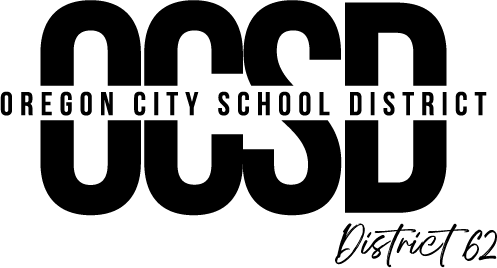Budget / funding
School Funding Overview
At its most basic level, an Oregon public school gets its funding through three primary sources: local property taxes, state income taxes and federal grants. Property taxes used to be the main source of a school's money, and districts do still get significant distributions from the counties they serve. Many districts also ask voters for extra property taxes — to fund bond programs (typically for building or improving schools) or local option levies. Local revenue is raised by or flows to local school districts. Federal revenue is allocated to school districts primarily based on eligibility for federal education programs.
In the 1990's, Oregon passed two ballot measures (Measure 5 and Measure 50) that shifted a major portion of the responsibility for school funding to the state. Those measures gave schools a maximum dollar amount they could collect, and froze taxable property values — the combined effect was for schools to ask the state legislature for help. These days, K-12 education makes up about 38 percent of the state’s budget. The Legislative Assembly, after debate and deliberation, sets the amount of state dollars that schools are to receive for a two-year funding cycle.
The state’s general fund money comes almost entirely from income taxes. Federal dollars come through various sources: the Individuals with Disabilities Education Act for special education, Title 3 for students who are emerging bilinguals, Title II for professional learning, etc. But a major source of funding is Title I, given to schools that serve communities where more than 35 percent of children are in poverty. In Oregon, more than 550 schools — about half — are eligible for Title I dollars. In OCSD, the schools that qualify as Title I are Holcomb Elementary, Gaffney Lane Elementary and Candy Lane Elementary.
Other Sources
Beyond local, state and federal tax dollars, there are other sources of revenue for public schools. These include things like Measure 110 (marijuana tax), Measure 98 (High School Success), Student Investment Account (SIA) and House Bill 3427 (Corporate Activity Tax-CAT).
The Common School Fund is a trust set up at Oregon’s founding. Managed timber sales and other natural-resource extraction fuel this account.
The Oregon Lottery allocates 53 percent of its money to education, which also includes colleges and universities.
Parent Teacher Associations/Booster Clubs can raise money too. These funds typically pay for materials, trips, athletics, playground equipment, or other “extras.” The money cannot be used for staff salaries.
School Boards don’t involve themselves in day-to-day expenses. Instead, they can direct money into long-term investments and planning, such as technology goals or new schools. Sometimes they will set directives on things like class size limits, which translates to a mandate to hire more teachers.
So Where does the money Go?
The state uses a complicated distribution formula that tracks how many kids are in each school and how many of those fall into a category of extra need. For example, students who qualify for special education get a double weight in the formula, students who aren’t native English-speakers earn 150 percent, etc. Although districts are provided funding based on the student need formula (called ADMw or Average Daily Membership weighted), the dollars are not tied to any particular student.
Approximately 80-85 percent of public education funding goes to staff salaries and benefits. That is why you may have heard what a big deal it is that Oregon doesn’t have enough money for the retirement benefits it promised to public employees. The Public Employees Retirement System (PERS) hasn’t brought in the anticipated revenues from its investments, which means schools may have to backfill from their own budgets. For more information about PERS, click on this link PERS Information Center which directs you to a page dedicated to this topic on the OSBA website. After personnel costs come busing contracts, curriculum materials, professional development, central-office programs, nutrition programs, building maintenance, and a rainy day fund. After all that, school principals are left with a relatively small piece of the pie to pay for the things they need for day-to-day operations.
How Does the Process Work in OCSD?
The OCSD Budget Committee consists of the Board of Directors and an equal number of citizens that review the District’s proposed budget. This work is done during one or more public meetings. The public is encouraged to attend because one of the most important purposes of the committee is to take comments and questions from interested citizens. The committee can make changes to the proposed budget to meet the goals and objectives established by the school board. When it is satisfied, the committee approves the budget.
Each of the members has the same authority, whether school board member or appointed citizen. Each member is appointed for staggered 3-year terms. The committee cannot receive reimbursement for expenses incurred while serving.
Phase 1 - The Chief financial officer puts together a proposed budget in a format designed by the Department of Revenue and to meet the goals and objectives set by the school board.
Phase 2 - The OCSD Budget Committee reviews the proposed budget, listens to comments from citizens, and then will approve the budget. (Typically occurs at the end of May)
Phase 3 - The approved budget is presented to the OCSD Board at a special meeting called a Budget Hearing. This typically occurs as a separate meeting prior to the normal June board meeting. Assuming they accept the Budget Committee's approval of the proposed budget, they formally adopt it with a board motion. They can also make changes to the approved budget prior to adoption assuming it doesn’t meet the threshold that legally requires budget committee approval. This process also certifies property taxes to the county tax assessor.
Phase 4 - This occurs during the fiscal year. This phase often includes changes to the adopted budget. Changes must be approved by the school board, and possibly a supplemental budget process depending upon the type and the amount of the proposed change.
